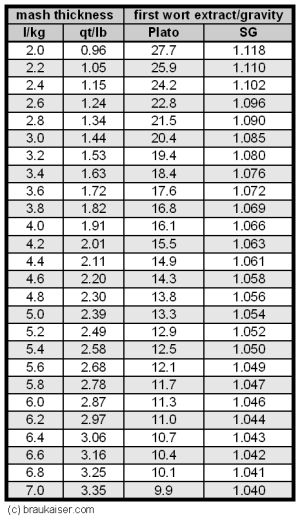Justibone
Well-Known Member
70% is pretty good. 

I wasn't too upset with the 70%, as I realize I'm using a bunch of equipment I picked up at garage sales. It's just that I got my own grain mill and I used a really fine crush, which I figured would get my efficiency up a little higher.
I think another problem could be that I didn't stir up the mash enough and maybe I did have some doughballs.
Thanks for posting the info from Kai - I'm definitely going to read through it.











